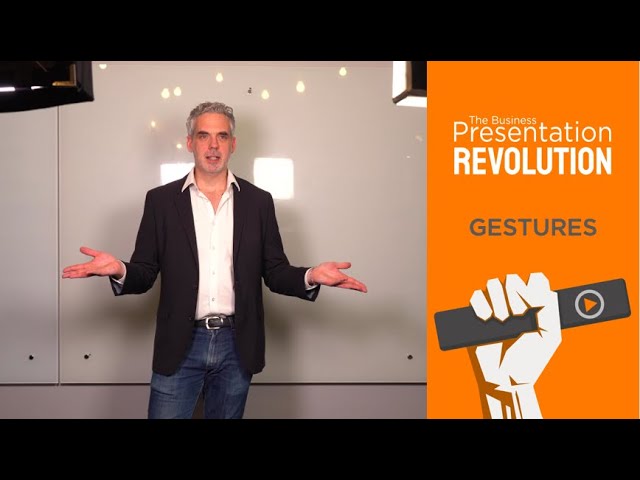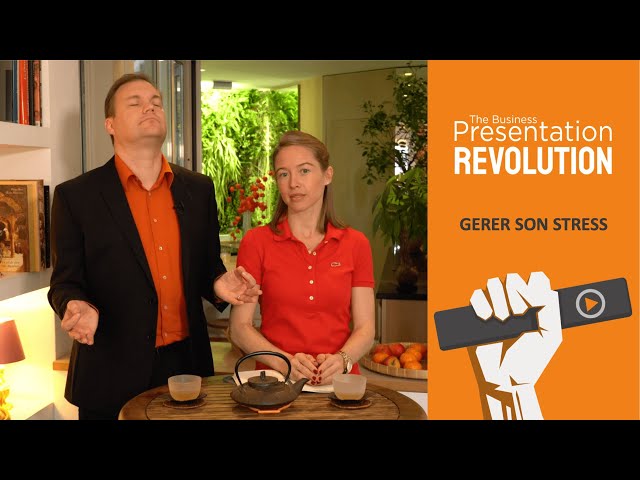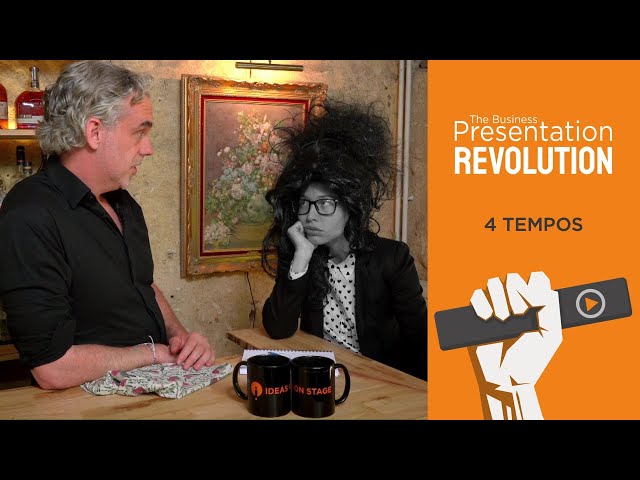This guide will give you all the tools necessary to help you succeed whether its a small face to face meeting or in front of an audience of thousands of people. Getting up and selling ideas to an audience is a stressful exercise for most of us. So how do we handle it? What are the things we should avoid? Thanks to this guide written by the best professionals of the public speaking world, you can learn the necessary techniques to help you be a great public speaker and beat the stress.
Table of Contents
Who are we?
Ideas on Stage is an agency specialized in corporate presentations with over 13 years of experience. We have collectively coached and trained thousands of speakers in all industries. We have an enormous amount of experience in preparing TED style presentations with over 300 TEDx speakers coached in dozens of TED events in France, the UK and the United States.
To prepare our speakers, we use traditional public speaking techniques, but also use new technologies during our coaching sessions such as virtual reality tools. We also use the most recent methods of visual creation and storytelling.
The Fundamental Techniques of Public Speaking
Public speaking is very connected to the oral arts of theater. It’s an ancient practice, built over thousands of years, and is a pillar of our modern societies. The Greeks were probably the first to have formalized the codes. These techniques will give you presence and confidence on stage. It is necessary to master them, but they must be completed with storytelling techniques and visuals for a delivery that is complete, effective and above all memorable.
These delivery techniques mainly cover the elements of posture, breath, voice, eye contact and gesture. We will explain step by step how to become a great speaker.
Posture: Grounded but Not Fixed
Posture is the first element of successful delivery. A confident and stable posture, committed but not tense, will reinforce your presence on stage and will project a positive image of yourself. On the other hand, a closed and weak posture, with repetitive gestures linked to stress, will show a lack of confidence which can negatively impact your speech.

A great posture starts from the ground, from the feet. Put your feet flat, in good solid contact with the floor and well spaced (hip width apart). In this position you are stable and solid.
Keep your legs straight, tonic, without being too tense or locked. If you need to walk on the stage, every movement should remain natural.
Your hips, chest and shoulders are aligned vertically above the feet, with a nice and straight spine giving an upright, tonic posture, but not too rigid. You should be able to move comfortably from spot to spot.
Your head should be straight as if an invisible wire was lightly pulling your head towards the ceiling. The most important thing is to have great alignment: chest—neck—head as this allows you to breathe effortlessly.
In order to master this posture, try this Alexander technique: start with your head, shoulders and arms doubled over in front of you, feet flat on the ground. Stay down there and let your muscles relax, feel your shoulders loosen and body adjust to the position and take deep breaths. Then, slowly come back up, vertebrae by vertebrae—the hips then spine slowly uncurling, then the shoulders and finally the head. Check your body for any tension and lightly shrug your shoulders to rid yourself of any tension. Then try repeat the exercise. The aim is to improve alignment in the body and rid yourself of tension that deforms your posture. Physical tension affects the posture and the voice, which ultimately reduces the power of your presence.
If you are one of these people who can’t stop moving on stage, on the spot or going too far left or right, we’ll give you a tip in the section “resolving typical issues with delivery.”
Breath
A calm, deep and supported breath will give energy to your voice. With a bit of practice, it will also help you deal with your stress before entering the stage.
Breath and posture are connected for a simple mechanical reason: it’s easier to breathe when we hold ourselves straight than when we are hunched. The air passes without effort through the nose and mouth to the lungs.

To work on your breath, start by adopting a good posture, as described above. Close your eyes. If you have issues with balance keep your eyes open but focus on your breathing and everything that you can feel and observe during this exercise.
The first exercise consists of breathing slowly, calmly and deeply, in and out. Imagine that the air is going right to the bottom of your lungs. Continue to breathe in until your lungs are full, this will work all your muscles and in particular the diaphragm. Repeat the exercise several times to discover this area, always remembering to go at a pace which is comfortable for you. To help you follow the mechanical movements and understand your breathing process better, place a hand over your solar plexus and another on your belly.
Next, try to alter your breathing. Slow it down as much as possible. Or in reverse accelerate it. Take the time to feel the impact of slow and rapid breathing and how it can affect you, without feeling dizzy. Try to find the rhythm that seems most natural for you, a rhythm where you feel most at ease. Continue to breathe deeply in and out without exaggerating. For public speaking, your breathing needs to feel normal and unforced.
The following exercise will help you learn how to build a column of air that connects the diaphragm to the vocal chords.
First, try to imagine a column between the solar plexus and the vocal chords. It is a column of air that is powered by the diaphragm and sent up through the vocal chords to make sound. Breathe in, then breathe out and count. Begin by doing it noiselessly, just a faint hissing sound. Count to 10 in your head for one hiss. Repeat and try to increase the count each time you breathe out; count to 12, 14, 16, 18, etc. This exercise will help you build your breathing capacity.
The next step is to repeat the exercise on a big breath but this time, while exhaling, make a humming sound instead of a hiss. Do this a few times to warm the vocal chords. Then tune the hum to the sound of various open vowels: “aaaah, aaay, eeh, aaay, aaah.” Repeat the exercise using other vowel sounds. “aaah, orrr, oooh, orrr, aaah,” but always begin with the hum. Keep practicing until the sound comes naturally with a deeper and calmer breath.
Voice
To simplify things, there are two types of voices: the voice from the chest and the voice from the head. A voice from the chest will be deeper but harder to project and make audible for the audience. A voice from the head is easier to amplify naturally, but if it’s pushed it will become high-pitched and grate on the ear. In order to feel the difference, place one hand on your chest and another one on the top of your head. Start by producing a deep vocal sound with the vowel “oooh.” You should feel a vibration in your chest. It’s the amplifying effect from the thoracic cage, exactly like the hollow body of a guitar. Then try emitting a higher-pitched sound such as “iiiii.” You should feel your skull vibrating. Try to change the tonality between the deeply pitched and high pitched without forcing anything. Try to discover the pitches of your natural resonance range.
We’re not trying to become singers. For public speaking and presenting, we advise you to work on the amplification of your “natural pitch.” We all have our own particular natural “timbre” and “pitch.” It is unwise to try to change that, even if you wish your natural pitch were lower or higher. There is nothing to gain from sounding like someone else and the downside is that you will sound artificial and unauthentic. We cannot ask a tenor to sing like a baritone. The best thing we can do is take what nature gave us and learn how to use its full potential towards our audience.
To work your natural pitch and range, actively aim to speak so that the sound is coming out of the front of your mouth rather than the back of your throat. Again, pitching on a hum in your warm-up will help to develop this and bring the voice forward. Use your hands on your face to feel the vibrations. It is probably worth mentioning here that, if you’re serious about working on your voice, you really need to work with a coach as this part of your development cannot be mastered via an article, it requires professional help and feedback.

Finally, certain people have much stronger natural voices than others. If your voice is particularly soft, we advise you to use a microphone, even if the room is not that big. Don’t be shy about this, it will save your voice and avoid frustrating your audience. Also, from my experience, shouting will create tension with your audience, it’s much better to use normally spoken tones, amplified by a sound system. If you try to push your voice too much, you will end up sounding tired and dry. Your voice will become worse and worse and you will lose confidence, which is something you want to avoid, especially if you need it over several days.
Eye Contact
Eye contact is one of the keys to become a great public speaker, at least in western culture. Without it, an audience will feel excluded and disengage. Even a conversation between two people needs eye contact, to gauge the non-verbal cues and garner the intention of the person talking to us. As a presenter, it gives us energy as we ride on the reactions and engagement of our audience. It also helps us find the right rhythm and add pauses whenever necessary.
Eye contact needs to be directed to individuals and include the whole crowd. You should be able to target one person in the audience, but also look in every direction to address everyone. I once watched a TED talk where the speaker stared into the same spot in the audience the entire time and most of the audience eventually lost interest, or had trouble staying engaged. We cannot afford to make our audiences work so hard.

For this exercise, you probably don’t have an audience in front of you to practice. One solution is to place a couple of rows of Post-its on a blank wall in front of you, to represent individual members of the audience. Start by greeting the “audience members” in one gesture and welcome phrase then focus on one particular “Post-it” audience member and address it with a complete sentence. Stay with this same “target” until the end of the phrase/sentence, then move on to a new audience member with the following sentence/phrase. Another way to do it is to project a picture of an audience on a large screen, it works really well. Another tool we use to train people to establish good eye contact with an audience is virtual reality.
Ideally, you should be able to find the right balance between making a meaningful connection with each audience member and shifting your gaze in another direction. Stay long enough with each audience member to send them an idea, or a phrase before moving on to the next in a natural pattern (try not to be too mechanical). At first, it can feel a bit like a regimented exercise, but with practice it will become fluid and natural, and greatly improve your connection with the audience.
In a small room, with just a few people sitting opposite you, it’s important to address everyone. In a bigger room with 20 + people, it’s more difficult to address everyone but at least try to establish eye contact with as many people as possible. You will eventually connect with everyone. For those of you aiming to give a big speech at an event or addressing a very large audience you will need to divide the crowd in front of you in zones, you will then be able to establish eye contact with people not only in the front, but also the middle left, right, back left, etc. From a certain distance, you’re making eye contact with everyone.
Gesture
Good gesture will make you look comfortable on stage and will help you reinforce the key ideas of your talk. Gesture is a lot simpler than it seems.
Good gesture is natural, open and expressive. Natural because it matches your style. If you are very demonstrative, you can make a lot of large gestures. If you are more reserved, fewer but subtler gestures will better fit your style. Avoid thinking you need to change your personality to become a good public speaker. We’ve seen many introverts being told to behave like extroverts, it simply doesn’t work. Good gesture can help the audience better understand what we are saying. It punctuates our talk, illustrates our stories and communicates non-verbal signals.
Before we explain how to practice gestures, here are some gestures to avoid:
- Don’t put your hands in your pocket. It looks nonchalant and noncommittal.
- Don’t cross your arms. Contrary to a popular myth, it doesn’t necessarily mean that you have a closed attitude. It is simply a comfortable position that many people adopt while standing. But it has been so talked about that it has just become a cliché that everyone accepts, so it’s best to avoid crossing your arms.
- Don’t hold your hands behind your back. It’s usually a sign that the speaker feels uncomfortable on stage. Michael Bay did this during his CES 2014 talk when he lost his prompter.
- Don’t rub your hands. Bill Gates was always doing this. It makes him look like he is preparing something evil (especially when he released mosquitos into the audience during his TED talk!) It’s the gesture that Mr. Burns from the Simpsons always does
- Don’t point your finger (whatever the finger). This is a gesture that is considered inappropriate in many cultures. If you need to point at a direction, do it with your whole hand, palm open.

In order to practice gestures, start by adopting a rooted stance. Find your breathing rhythm. Let your hands hang by your side. Imagine that you’re establishing eye contact with your audience. This position feels awkward and exposed. Why? Because this position feels vulnerable, without any psychological protection. It feels “naked.” Paradoxically, someone watching you from the audience will perceive you as confident and relaxed. This is called the comfort zone paradox: as you open your body, you feel less protected, but you look more accessible and confident. When you close your body language with closed gestures such as crossed arms, you feel more protected but look aloof and insecure.
From the neutral, open position, start talking. Use your hands and arms to naturally punctuate the key moments of your talk. Once again, outside of the gestures to avoid or gestures which are not coherent and interfere with your communication (parasitic gestures), using natural and spontaneous gestures is often the best approach. If you’re speaking about something simple, don’t make it look complex with elaborate or big gestures, keep it small and simple. Match your gestures to your vocal rhythm. Slow gestures with slow rhythm, for example.
Don’t forget that you are a mirror to the audience, so reverse the lines you are tracing in the air between east and west, for example. This requires a bit of practice, but it will make your gestures clearer and more logical.
To conclude with gestures, I cannot stress how important it is not to try to stage your gestures too much. They need to be natural. If you have rehearsed and “own” your material, the right gestures will come spontaneously.
Speaking on stage
Now that you know the basic techniques to speak on stage, we will see how we can apply these techniques throughout a talk, from the moment we take ownership of the stage to the conclusion.

Taking the stage
A great entrance will give you energy, good connection with the audience and will help you to establish your presence. Before taking the stage, you may be well waiting in the wings, sitting in the reserved seats on the front row or standing around somewhere nearby. Once it’s your turn, take the stage with a solid volition, not too pushed, not too relaxed. Establish eye contact with the audience as soon as possible. Look at them as you take your position center stage. Once at the center, allow yourself a few seconds to take ownership of the stage. Plant yourself, open your shoulders and connect with the audience with a smile and open posture. When you are ready, simply begin to talk. Real leaders only start when they are ready. They are masters of their own time.
A little trick to prevent you from rushing your start is to start talking only after you count to 3 from the moment you plant your feet.
The first minute
The first minute of public speaking is the most difficult, in particular if you feel particularly stressed or something didn’t go as planned. The best way to succeed during the first minute is to rehearse not until you can do it right, but until you can’t do it wrong. Rehearse your entrance and first minute to the point it becomes subconscious. You are in effect placing in rails that will keep you safe in case something happens that could throw you off course. You can even go further and master the first 5 minutes. This, in turn, will help you deal with the stress. Don’t worry about rehearsing so much that you will sound artificial. People who sound artificial are actually people who did not rehearse enough to be comfortable on stage.
Maintain Your Connection With the Audience
During the rest of the presentation, apply the methods explained in this guide. Use eye contact to establish a dialogue with each person, look everywhere around the audience. No need to rush.
Conclude your talk.
In most cultures, the magic words that indicates that you have finished your talk is “Thank you.” If the audience is applauding, wait a bit, then slowly leave the stage. If possible, maintain eye contact while you exit the stage. Bravo, you’ve just concluded a wonderful talk!
How to Solve Common Problems Associated With Public Speaking
Stress, “umm,” involuntary movements, monotony, this section contains tips on how to eliminate the problems commonly associated with public speaking. Some are quick to correct, others will take hours of practice and experimentation. Don’t be discouraged, and if possible use a coach to get valuable feedback.
Manage Your Stress
Public speaking is one of the most feared topics for people as it leaves us vulnerable. Standing in front of an audience, fear of danger, fear of judgment and fear of the unknown can trigger our insecurities. Poor judgment from others, the shame of failure can make our mind go down the rabbit hole. Fortunately, there are several methods which exist to help us manage our stress.
The first thing you should remember is that stress is normal and even healthy as long as it’s manageable and not overwhelming. But if the stress becomes too difficult to cope with, it will hinder your performance and reduce the impact of your talk. So what can you do about it? We are all different, and something that works for someone may not work for others. For example, some people are using meditation in order to relax and it works. But for others, meditating might actually increase their stress levels, because the heightened feeling of self-awareness can become overpowering. At any rate, the causes behind the stress as indicated earlier are the same for everyone:
- The fear of the symbolic death of our ego under the scrutiny and judgment of the audience. This is also linked to the fear of failure.
- Fear of the unknown, the impossibility to control the future, which can generate anxiety build up until it becomes too stressful.
In order to deal with these 2 causes and fight them, there are a number of methods. I will list a few here:
- Rehearse, rehearse, rehearse. We will never say it enough. In the words of Benjamin Franklin, failing to prepare is preparing to fail. Practice until you can’t get it wrong.
- Use virtual reality to desensitize yourself to the fear of judgment from a crowd.
- When possible, meet your audience beforehand.
- Practice meditation in order to relax. This will work better if you practice regularly.
- Avoid focusing on your thoughts, don’t go down the rabbit hole. Keep talking with other speakers backstage to stop your mind from creating imaginary worst-case scenarios.
- Stay present, keep your eye on the time, where you’re entering from and what’s currently happening.

Eliminating vocal ums and errs and other filler words
Ums and filler words are the most common language tics when we present. To correct them, we are going to use one of the tools we already talked about. And, surprisingly, it is eye contact.
Why do we hesitate with filler vowels and words? Because we think as we speak. A umm is something we unconsciously do when we think and focus on our thoughts. It’s an old human habit to fill the silence as, for most people, silence is not comfortable.
Ums are nearly always accompanied by a systematic movement from the eyes, usually to the ceiling. Observe people who umm and err, it’s an automatic reflex that we all have. So how do you stop it? The simplest thing to do is to stop our natural reflex: instead of turning “inwards” towards your thoughts, keep your mind directed towards the audience by keeping good eye contact. Just fill the space with a pause instead of a vocal sound. You can work with a coach on this, but you can also film yourself, or you can use AI software from PowerPoint to tell you exactly how many times you umm and err, but ultimately, keep your mind and your eyes focused on the audience; with a bit of practice, the parasitic vocal fillers will disappear.
Stopping Parasitic Movement
Some people cannot stop moving on stage. Once again, we’re going to use eye contact with the audience to eliminate unconscious movements. To understand why, try a little test: try to move when you speak and keep your eye on someone in the audience. It’s nearly impossible. Good eye contact with someone in the audience keeps you anchored.
If you don’t believe us, look at speakers who constantly move around: they are not making meaningful eye contact with the audience. They look at the floor, the ceiling, or vaguely in the direction of the audience but without really seeing them.
By keeping constant eye contact, you will stop moving unnecessarily and unconsciously.
Always looking in the same direction
On stage, we all tend to prefer to look in one direction in particular. Sometimes we even look at the same person during the whole presentation. It is sometimes linked to the “student-teacher” phenomenon: the student watches his or her teacher during the whole presentation because unconsciously he or she is looking for their approval. Believe me, the teacher does not want to be the center of attention during the whole presentation, I’ve been there and it is uncomfortable!
To avoid that pitfall, practice using the Post-its and above all, try to detach from the pressures of the task and try to consider each member of the public as equal whatever their position towards you.
Getting rid of monotony
If you have received feedback that your voice is monotonous or lacks dynamics, we advise you to discover and practice the 4 Tempos, demonstrated in a video with Michael and Rose.

This video is part of our series The Business Presentation Revolution.
To go further
This guide contains many elements to give a great talk and win over your audience. But there are other factors which will help you succeed even further.
Developing a Strong Message and Speech
You can be an excellent speaker, but if you have nothing to say the audience will resent the fact you made them waste their time. That’s why you should always start your preparation by identifying your key messages. To help you, we have developed a tool called the “Audience Transformation Roadmap”. It’s a powerful tool that allows you to identify all key messages in order to convince your audience.
Use of Visuals
Visuals are often created with Microsoft PowerPoint, but not exclusively: they could also be posters or objects that you bring on stage. You could also draw on a paperboard or a digital tablet during your talk. It could also be something more elaborate such as a green screen background, especially during online presentations.
If you use PowerPoint slides (or another type of software such as Keynote or press), our advice is to make it as simple as possible, and put the minimum of information on those slides. When we have the time, we will write a similar guide on how to produce really great and effective PowerPoint slides.
Work With a Coach
We have tried to make this guide as comprehensive as possible. The art of giving a great talk is like a game of tennis: nobody is born with these skills, we all have to learn how to do it and practice, practice, practice. A public speaking coach will help you master the various techniques described in this guide. Whatever your level, you can only progress. If you liked this guide, don’t hesitate to contact us with the form below.
